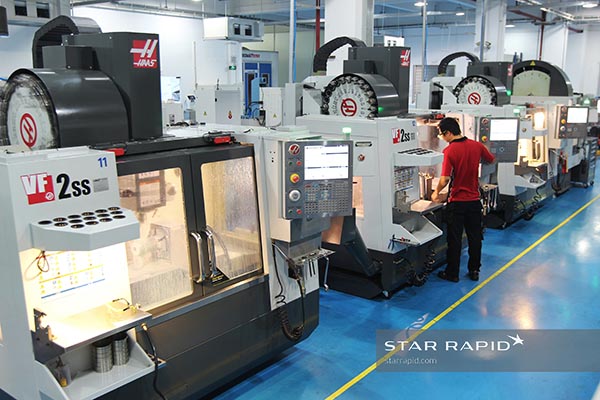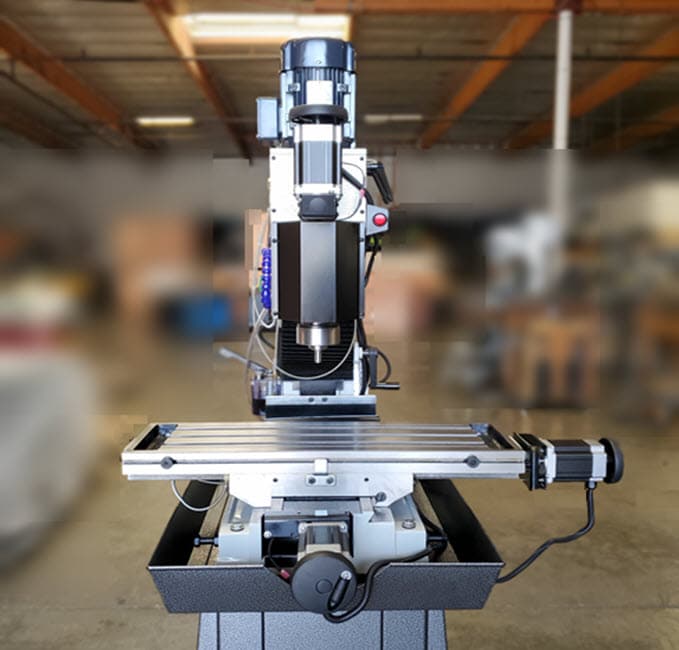Table of Contents
Are you curious about using a boring bar on a CNC mill? If so, you’re not alone! Many machinists and hobbyists alike wonder whether it’s possible to use a boring bar on a CNC mill, and what the benefits and drawbacks might be. In this article, we’ll explore the ins and outs of using a boring bar on a CNC mill, including the types of boring bars available, the materials they can work with, and the potential advantages and disadvantages of using this technique. So whether you’re a seasoned CNC machinist or just beginning to explore the world of milling, read on to learn more about using a boring bar on a CNC mill!
Can You Use a Boring Bar on a CNC Mill?
Understanding the capabilities of a CNC mill is crucial for any machinist. When it comes to manufacturing complex parts with precision, boring bars are often considered an essential tool. However, many professionals wonder whether it is possible to use a boring bar on a CNC mill. In this article, we will delve into this topic and provide you with all the information you need.
The Basics of Boring Bars
Boring bars are cylindrical tools that are used in metalworking to enlarge existing holes or bore new ones. They are typically made of tungsten carbide, and their shape and size vary depending on the application. Boring bars are used in many industries, including aerospace, automotive, and medical.
The process of using a boring bar involves mounting it onto a lathe and rotating the workpiece while the bar moves axially. This movement creates a conical shape inside the workpiece, which can be used for various purposes such as fitting bearings, creating fluid passages, or connecting parts.
Using a Boring Bar on a CNC Mill
While boring bars are traditionally used on lathes, it is possible to use them on a CNC mill. The process involves mounting the boring bar onto the mill’s spindle and using the machine’s control system to move the bar and workpiece. This technique is known as “boring on a mill.”
Boring on a mill is generally slower than using a lathe, but it can be beneficial in certain situations. For example, if the workpiece is too large or awkwardly shaped to fit on a lathe, a mill can be used instead. Additionally, if the workpiece has already been partially machined on a mill, it may be more efficient to complete the boring process on the same machine.
The Benefits of Using a Boring Bar on a CNC Mill
One of the main benefits of using a boring bar on a CNC mill is the ability to machine complex parts with precision. CNC mills are capable of producing intricate shapes and patterns, which can be difficult to achieve with a lathe alone. Additionally, using a mill for boring allows for more control over the cutting speed and feed rate, which can lead to higher accuracy and better surface finishes.
Another benefit of using a boring bar on a CNC mill is the reduced setup time. Traditional boring on a lathe requires mounting the workpiece and tool, adjusting the machine settings, and ensuring that everything is aligned correctly. With a CNC mill, the setup process is simplified, as the machine’s control system can be programmed to perform the necessary operations automatically.
Boring Bars vs. End Mills
While both boring bars and end mills are used for cutting and shaping metal, they have different applications. Boring bars are used primarily for enlarging holes or creating tapered shapes, while end mills are used for cutting flat surfaces or creating complex shapes with 3D contours.
Boring bars are typically more rigid than end mills, as they need to withstand the axial forces generated during the boring process. Additionally, boring bars are designed to be inserted into existing holes, while end mills are used to create new ones.
Conclusion
In conclusion, using a boring bar on a CNC mill is possible and can be beneficial in certain situations. Boring on a mill allows for more precise machining of complex parts, reduced setup time, and the ability to machine workpieces that are too large or awkwardly shaped for a lathe. However, it is important to understand the differences between boring bars and end mills and choose the appropriate tool for the job at hand.
Frequently Asked Questions
In this section, we will address some of the most commonly asked questions about using a boring bar on a CNC mill.
Can you use a boring bar on a CNC mill?
Yes, you can use a boring bar on a CNC mill. Boring bars are commonly used for enlarging existing holes or creating new ones with greater precision. CNC mills are ideal for this type of operation, as they can be programmed to make precise cuts with high accuracy.
It is important to note that the type of boring bar you choose will depend on the material being machined and the size of the hole you need to create. Additionally, it is important to have the right tool holder and cutting inserts for the job, as these components can greatly affect the quality of the finished product.
What are some benefits of using a boring bar on a CNC mill?
There are several benefits to using a boring bar on a CNC mill. First, boring bars allow for greater precision when enlarging or creating holes. This is because the bar can be set to the desired diameter and fed into the material at a precise depth. Additionally, boring bars can be used to create holes that are not possible with other cutting tools, such as end mills or drills.
Another benefit of using a boring bar on a CNC mill is the ability to program the machine to make multiple cuts at once. This can greatly increase efficiency and reduce cycle times. Finally, using a boring bar can also result in a better surface finish on the inside of the hole, which can be important for certain applications.
What are some common types of boring bars used on CNC mills?
There are several types of boring bars that are commonly used on CNC mills. The most common type is the carbide boring bar, which is made from a hardened steel body with a carbide insert for the cutting edge. These bars are generally more expensive than other types, but they offer excellent performance and can be used on a wide range of materials.
Other types of boring bars include the HSS (high-speed steel) boring bar, which is less expensive but may not perform as well on harder materials, and the indexable boring bar, which allows for easy replacement of the cutting insert when it becomes dull. The type of boring bar you choose will depend on the specific application and materials being machined.
How do you choose the right boring bar for your CNC mill?
Choosing the right boring bar for your CNC mill will depend on several factors, including the material being machined, the size of the hole you need to create, and the desired finish quality. When selecting a boring bar, you should also consider the tool holder and cutting inserts that will be used.
To choose the right boring bar, you should first determine the required hole diameter and depth. You should then consider the material being machined and choose a boring bar with the appropriate cutting edge and coating for that material. Finally, you should consider the desired finish quality and choose a boring bar that will provide the necessary surface finish.
What are some safety considerations when using a boring bar on a CNC mill?
When using a boring bar on a CNC mill, it is important to take proper safety precautions to prevent injury or damage to the machine. First, always wear appropriate personal protective equipment, such as safety glasses and gloves. Additionally, make sure the machine is properly secured and that the workpiece is clamped securely in place.
When using a boring bar, it is important to pay close attention to the cutting conditions and adjust the feed and speed as necessary to prevent tool breakage or damage to the workpiece. Finally, always follow proper machining practices and guidelines to ensure safe and effective operation of the machine.
In conclusion, using a boring bar on a CNC mill is possible, but it requires careful planning, preparation, and execution. It is essential to choose the right tool and make sure that the spindle speed, feed rate, and depth of cut are set correctly to avoid any damage to the machine or the workpiece.
However, with the right approach, using a boring bar on a CNC mill can be an efficient and cost-effective way to produce accurate and high-quality bores. It allows for precise control over the cutting process, which is particularly useful when working with complex geometries or materials that are difficult to machine.
Overall, whether or not to use a boring bar on a CNC mill depends on the specific requirements of the job at hand. With the right tools and techniques, it can be a valuable addition to any machining operation, but it is important to proceed with caution and always prioritize safety and accuracy.
Request a quote today!
[contact-form-7 id="1578" title="Contact form"]
Please compress the file into a ZIP or RAR file before uploading. Alternatively, send through your RFQ by email.
enquires@unitymanufacture.com





